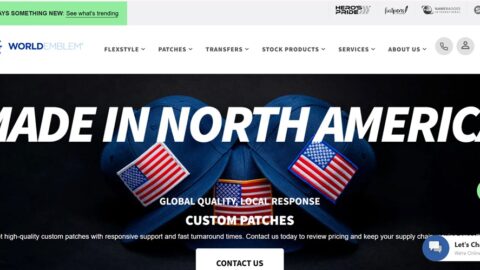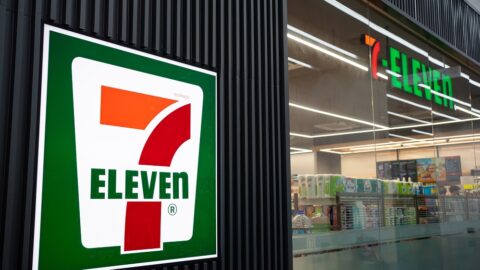The recent Amazon–Whole Foods megadeal is proof that the retail industry can continue to thrive even though bankruptcies and store closures have become commonplace. In fact, 67% of C-level retail executives said they expected to see an increase in overall M&A activity in 2017, according to a report from A.T. Kearney.
The report, titled: Off to New Peaks in Uncertain Times, outlines three predictions:
-
Mergers and acquisitions will increase on both ends of the spectrum, including megadeals and smaller buyouts;
-
Private equity firms and other financial industry buyers will continue to acquire more retailers/CPG brands that complement their existing portfolio of businesses; and
-
M&A activity growth will increase in all markets despite political uncertainty.
“The retail and consumer goods industries have a healthy pipeline and a lot of venues for growth,” said Bahige El-Rayes, a principal in the consumer and retail practice of A.T. Kearney. “Many retailers are sitting on lots of cash, and there’s an ongoing major transformation in the market. But extracting the synergies is increasingly difficult, especially if you’re not able to find the right player at the right valuation. We think that even though this year is expected to be very strong, we’re approaching the peak of the market [for M&A activity]. I wouldn’t be surprised if post-2018, we reach a plateau and see a slight adjustment.”
Consolidation Is Crucial For Retail Growth
For now, retail execs are betting on near-term growth due to the massive M&A activity that occurred in 2016. Last year, 58 megadeals were valued at more than $1 billion, the highest since 2008. Of these megadeals, consumer goods and food company deals jumped 46%. The report specifically pointed out the pending mergers of eyewear retail giants Essilor-Luxottica and drugstore rivals Walgreens-Rite Aid (which still remains up in the air) as examples of how “consolidation will be crucial to improving bottom line results” in 2017.
Mass merchants may be the retailers most open to consolidation because of the need to combat increasing competition from both e-Commerce and discount retailers, according to El-Rayes, who co-authored the A.T. Kearney report. Walmart, for example, recently has acquired innovative niche e-Commerce-first brands such as Moosejaw, Bonobos, ShoeBuy and ModCloth.
“These retailers would be looking for more opportunities to have scale in regions that they haven’t already scaled before,” said El-Rayes in an interview with Retail TouchPoints. “On the other side of the spectrum, I see specialty players with unique capabilities, such as a small online regional player, potentially being acquired by one of those larger groups. That’s why we expect both micro- and megadeals to continue, because we see an industry that is very bipolar.”
These smaller, “nimble innovators” are a key driver in retail’s digital transformation, and it’s becoming more apparent that execs are starting to rely on new technologies and customers from these brands to bolster their own offerings. Up to 40% of survey respondents said they will focus more on potential M&A deals under $100 million in 2017, a nearly seven-fold increase over 6% in 2016.
Private Equity Firms Set To Pounce On Brands
But retail companies aren’t the only ones with an interest in making deals; private equity firms are looking to add retail to their portfolio as well. As many as 92% of private equity execs expect greater or equal M&A activity in 2017.
“In 2016 and early 2017, private equity firms stayed on the sideline,” El-Rayes said. “They said that the market wasn’t being too rational. A lot of them had already made investments and were looking to recoup some of their returns. This year, there has been a renewed interest of private equity in the retail sector. The wave of bankruptcies has adjusted the valuations of major retail companies, so it created a few interesting opportunities where they can tap into them and purchase them. Private equity firms are trying to move in at an earlier stage than they would in the past, making them behave more like a VC.”
M&A Activity To Increase Globally, But Largely Remain Domestic
Private equity firms and other financial buyers are positive about the global M&A climate, but political uncertainty in the U.S. and major EU markets complicates global expansion strategies. Therefore, while M&A activity is likely to continue to increase in all regions, most acquirers will likely stick to domestically based companies.
Europe and North America accounted for 75% of total deal value in 2016, so both regions will likely drive the most M&A activity in 2017. Last year, Europe attracted 45% of the total capital transacted within M&As, reflecting the rise of the U.S. dollar against the euro and the pound. But don’t expect Europe to take home most of the capital in 2017 — AB InBev’s $107 billion acquisition of SABMiller accounted for nearly a quarter of 2016’s total global deal value.
To navigate the shifts in market dynamics and political conditions, consumer and retail companies will need a strategic approach that accounts for the risk of economic nationalism in various regions of the world.













